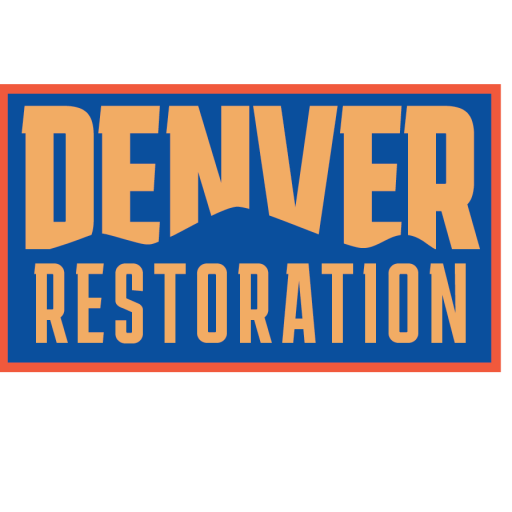Recognizing the Threat of Water Damage
Water damage can pose serious risks to properties, both residential and commercial. When left unchecked, it can result in substantial financial and structural damage. To prepare for water damage, understanding the potential sources, such as leaking pipes, sewage backups, and floods is a necessity.
Acknowledging the Potential Dangers
Burst pipes, faulty appliances, severe weather events, and other unforeseen incidents can cause significant water damage. In order to adequately anticipate flooding, it is critical to not only acknowledge these potential dangers but also to take proactive measures to protect your property. Regular inspections and preventative maintenance of your home or property can significantly reduce your vulnerability.
Understanding the Implications of Water Damage
Water damage can have considerable implications, both immediate and long-term. Aside from the evident physical damage to your property, water can also lead to the growth of mold and mildew, which pose serious health risks. The presence of mold can lead to allergies, asthma, and other respiratory problems if not addressed promptly and thoroughly.
Take Action: Establishing a Water Damage Mitigation Plan
An effective way to anticipate flooding and subsequent water damage is through establishing a property-specific water damage mitigation plan. This includes the identification of potential risks, preparation of emergency response procedures, and organization of resources and equipment necessary for immediate response and property restoration.
Resources and Equipment for Immediate Response
In case of an emergency, having the right resources and equipment ready is critical for efficient water damage mitigation. This includes water extractors, dehumidifiers, and fans to speed up the drying process and reduce the chances of mold development and secondary damage. Additionally, familiarity with damage assessment and estimation techniques is crucial for rapid remediation.
Restoration Techniques and Equipment: Your Ally in Water Damage Preparedness
Post-water damage, effective restoration is crucial to return the property to its previous state and to prevent further deterioration. Restoration techniques and equipment, such as air movers, moisture detectors, and dehumidifiers, are often utilized to ensure rapid recovery of the property.
The Role of Insurance in Water Damage Restoration
Having comprehensive insurance coverage is one way to prepare for water damage costs. Understanding legal obligations and insurance terms can expedite the restoration process and provide financial relief. It’s essential to communicate regularly with your insurance company to ensure your property is adequately covered.
Environmental and Health Safety: The Backbone of Water Damage Recovery
Environmental and health safety are critical during the water damage restoration process. Proper handling of contaminated water, safe disposal of damaged materials, and ensuring clean, dry conditions to prevent mold growth are all important facets of safety during the recovery period.
Final Word on Water Damage Preparedness
Water damage preparedness is not just about anticipating flooding. It involves understanding the many facets of water damage, implementing mitigation strategies, and adhering to safety measures. It is, fundamentally, about preserving the value of your property and ensuring the well-being of its occupants.
Experience Fires Dessimation: Understanding the Long and Short-Term Impacts
Fire damage is a challenging circumstance to deal with, as they can lead to severe emotional, financial, and physical destruction. As with water damage preparedness, a comprehensive understanding of the short and long-term effects of fires is essential.
The immense heat and destructive flames can ruin almost everything in their path –from everyday household items, personal belongings, to the very infrastructure of a property. These losses are immediate, visible, and the first aspect people typically think of when they imagine a house fire. However, it is the lingering hazards once the flames are doused, such as soot damage, smoke residue, and systemic structural damage that can carry dire long-term implications.
Identifying the Potential Risks of Fire Damage
Many factors can contribute to the potential risk of fire damage. Faulty electrical wiring, hazardous materials, or even a simple accident in the kitchen can set a building aflame. In fact, cooking fires make up a significant proportion of all residential fires.
Understanding these dangers is as crucial as acknowledging the risks of water damage. Like with any hazard, a proactive approach is critical to keep your property and occupants safe. This involves regular inspection of potential fire sources, educating oneself on fire safety measures, and maintaining accessible and operational fire safety equipment.
Fighting Back: Establishing a Fire Damage Mitigation Plan
The ability to respond effectively and swiftly in case of a fire significantly impacts the extent of the damage. A thorough fire damage mitigation plan should encompass the identification of potential fire hazards, understanding and following fire safety methods, thorough training of personnel or family members, and organizing necessary resources like firefighting equipment, escape routes, and community resources for support.
Immediate Response to Fire Damage
Post-fire damage, immediate action is significant. Adequate preparedness to deal with such situations, such as owning up-to-date firefighting equipment, can help control the damage. Moreover, structural assessments and damage estimations should be urgently conducted to determine the stability of the property and plan for restoration.
Restoration Tools: Assisting in Fire Damage Recovery
Just as specialized equipment is necessary for water damage restoration, similarly, different tools and techniques are used to restore properties post-fire damage. For example, air scrubbers and thermal fogging are employed to eliminate smoke odor, while soda blasting helps remove soot and other residues from the walls. Being aware of these techniques not only aids in understanding what to expect during the restoration process but also informs the choice of a competent restoration service provider.
The Role of Insurance in Fire Damage Restoration
Insurance coverage plays a significant role in mitigating the financial losses associated with fire damage. From covering the costs of temporary accommodation during the restoration to the rebuilding of a devastated property, a comprehensive fire insurance policy can thus make a substantial difference in one’s financial stability post-disaster.
It is critical to understand the inclusions and exclusions of your insurance policy, similar to what was stated earlier about water damage insurance coverage. These foundational concepts significantly aid in successful claim filing and negotiating the adequate value of loss with the insurance company.
Health Security during Fire Damage Recovery
Although a fire might be extinguished, considerable health hazards may still linger. Thermal damage from flames may release harmful substances such as asbestos and lead, which can pose health risks if inhaled. Ensuring a safe and healthy environment post-fire starts with understanding the potential hazards following a fire and the best methods to combat them.
It is thus essential to have professional remediation and restoration services who are trained in handling these substances and ensuring that the property is safe to inhabit once again.
Customer Communication and Crisis Management: Necessity in Damage Recovery
In the chaotic aftermath of any disaster, effective communication proves to be crucial. It is critical for property owners to effectively communicate with restoration professionals, insurance companies, and all those involved in the recovery process.
In addition, a robust crisis communication plan can help manage the aftermath more efficiently, thereby reducing panic and fostering effective recovery. This goes hand in hand with clear and open communication lines with restoration professionals who are essential in providing guidance and support throughout the recovery process.
Without a doubt, recovering from a catastrophic event such as fire or water damage can be overwhelming. But, armed with the right knowledge, sufficient resources, and prompt action, it is much more manageable. Always remember to prioritize safety and let professionals assist you in the recovery process ensuring a smooth return to normalcy.

